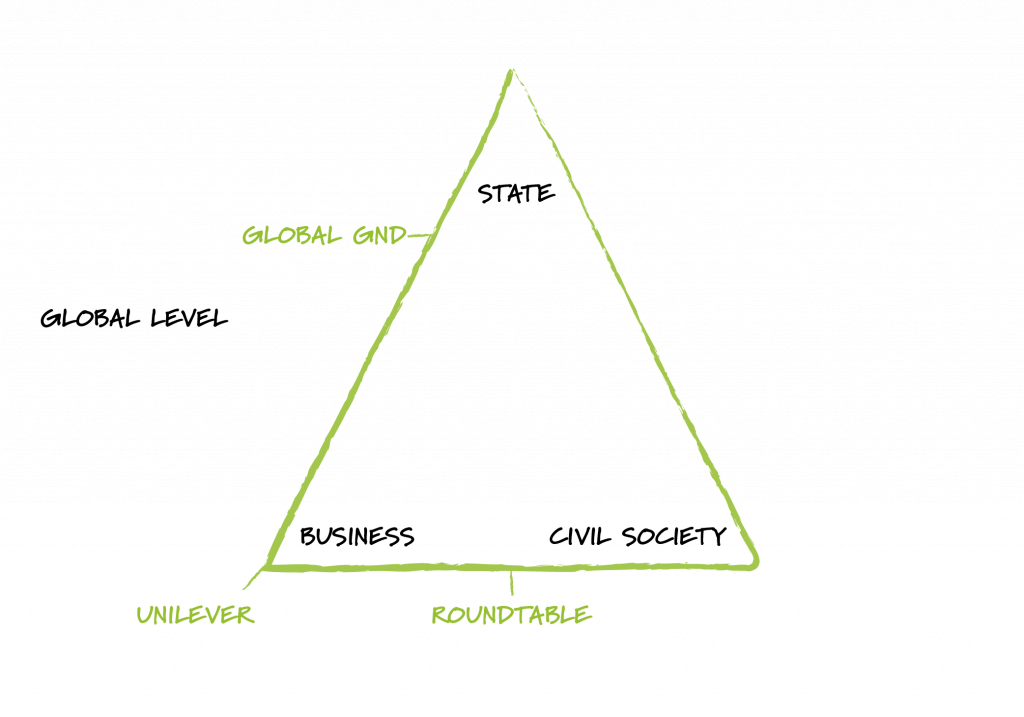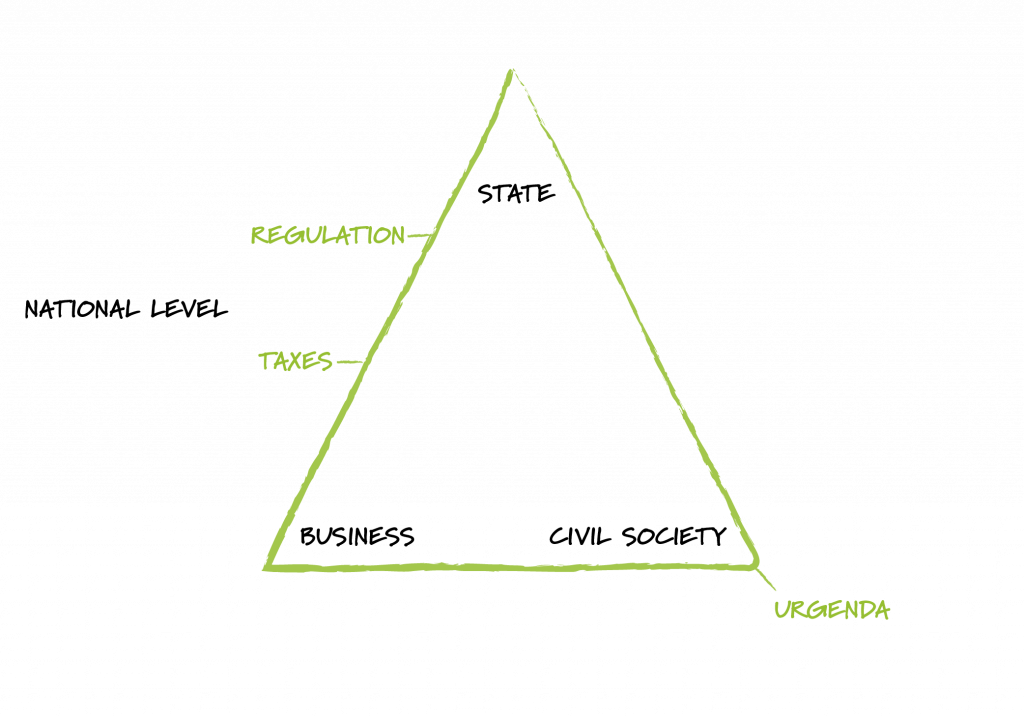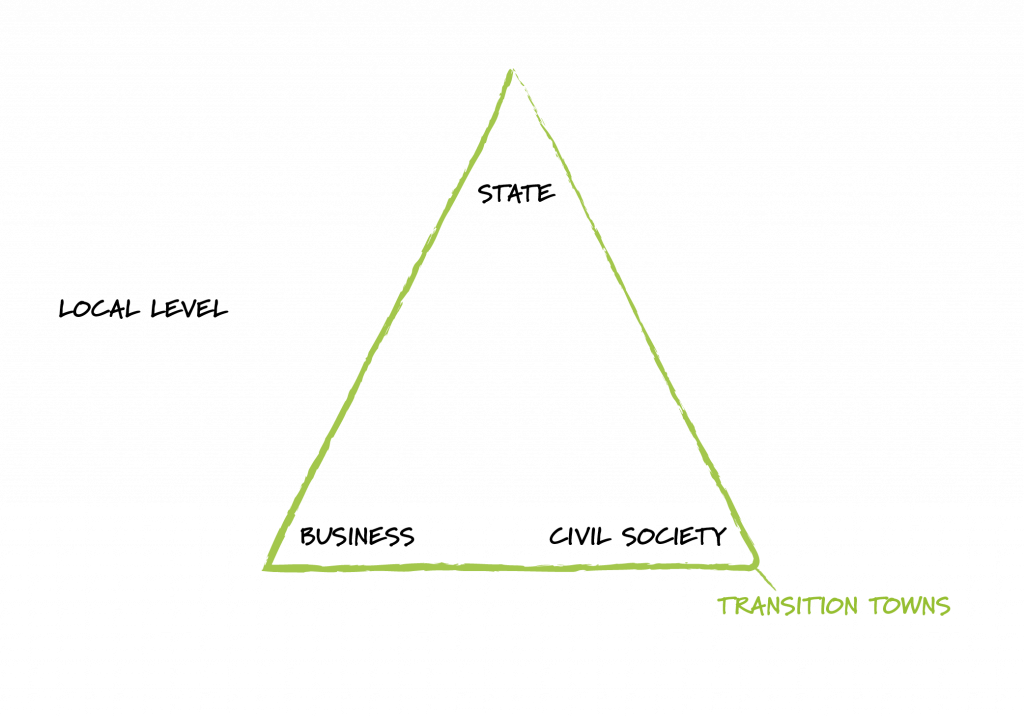What is the best route out of the climate crisis? While the need for action is increasingly consensual, its form and scale is the source of much debate. But the effectiveness of different paths to decarbonisation should not be our sole focus. Within any strategy, from carbon markets or a Green New Deal to the efforts of local-level initiatives, fundamental questions about how we live and by which values are embedded. In this essay, Jasper Blom presents a framework for thinking about green policies as political choices.
Four decades after the emergence of Green parties, ecological issues are finally taking centre stage in the public debate. Climate change is seen as a major threat across the globe. In half of the 26 countries worldwide surveyed by Pew Research, it is the top threat. New climate movements are emerging, businesses are talking about greening, and parties are developing serious environmental platforms.
This essay presents a framework to analyse the different currents of this reinvigorated climate debate. The framework allows for a political reading of proposals put forward to confront the climate emergency. It is a tool for all those campaigning and working for a greener future to help them determine which proposals to endorse.
A prism of choices
Green policy proposals can be ordered by two characteristics: leading actor (business, state, or civil society) and scale of action (from local to global). The characteristics of leading actor and scale of action are not just ways to categorise different currents of green thought; they speak to differences in underlying values. By considering these two characteristics, the framework enables a normative, political evaluation of different green proposals.

The first characteristic, the leading actor, refers to the kind of actor that proposals see as driving change towards a green future. Modern societies are made up of actors in three spheres: business, the state, and civil society. Each of these spheres works according to different logics and different values. The sphere of business is associated with a logic of competition and profit. Its proponents hail its efficiency and the freedom voluntary market exchanges offer. The sphere of the state is associated with a logic of hierarchical control by governmental actors. Proponents of the state point to the effectiveness of its coercive power and the legitimacy of its collectivist solutions (in democratic systems at least). The sphere of civil society is associated with voluntarism in non-profit organisations, unions, and commons. Proponents of civil society credit it with spontaneous solidarity and a real connection to communities.
The second characteristic, the scale of action, refers to which geographical level proposals entrust with driving change. It is most easily understood in terms of political units ranging from the municipality up to the global level of the United Nations. Business and civil society actors do not always follow the neat layering of political units, but, in many cases, they do. For example, my favourite Sheffield coffee business is the independent Ink & Water, which has one local coffee shop. At the national level, AMT Coffee has branches across the United Kingdom. Starbucks operates at the global level. The environmental writer E. F. Schumacher, author of the 1973 work Small is Beautiful, was one of the first to point out that different scales embed different values and logics of action.
Plotting the two characteristics of leading actor and scale of action creates a prism-shaped space in which to map green proposals.
The global level sees a logic of uniformity, bureaucratic procedure, hierarchical relations, and standards in companies or civil society organisations. The local level exhibits a logic of diversity and creativity. To stick to the coffee example: Starbucks franchises look the same and sell coffee in the same way all over the world, while independent local shops are different everywhere, reflecting the creativity of their owners. At the global level, actions have reach; at the local level, actions have community impact. If Starbucks bans plastic straws, it saves a tremendous amount of plastic. If Ink & Water bans plastic straws, it has a much smaller impact on the plastic soup but it might mean more for the local community. Finally, with increasing scale, inequalities of wealth and power also increase. The owner of a local coffee shop makes a decent salary, presumably somewhat higher than the baristas. The owner of Starbucks makes about 13 million dollars, more than 1000 times the salary of its median employee.
Plotting the two characteristics of leading actor and scale of action creates a prism-shaped space in which to map green proposals. Proposals might be located anywhere in the three-dimensional space of the prism as lead actors often collaborate, for example, business and civil society organisations setting an environmental standard together, or initiatives expand up from one municipality to other municipalities to the national level. The next section will map specific policy proposals using the prism. It should clarify the logic of framework so readers can readily plot policies that are not discussed here.
Green agendas through the prism of political values

At the global level, towards the corner of the state, sit proposals such as the 2009 Global Green New Deal of the United Nations Environmental Programme. This proposal calls for coordinated public investments worth hundreds of billions to be made by international organisations and states in the transition away from carbon. It was designed to revive growth and create jobs in the wake of the global financial crisis that started in 2008. Towards the corner of business, Unilever’s ambition to continue to grow globally at the same time as reducing its ecological footprint is a high-profile example. Demonstrating its reach, this multinational corporation aims to halve its environmental impact and improve the health and wellbeing of 1 billion people. On the side linking business and civil society, the various roundtables dealing with global production chains can be positioned. In these roundtables, businesses and civil society organisations set standards for the sustainable production of commodities such as palm oil and soy.

One step down at the national level, environmental regulations and taxes might be positioned somewhere between business and the state. Environmental taxes are usually seen as more market based, so they can be positioned closer to business, while regulations are seen as more command-and-control, and thus sit closer to the corner of the state. In both cases, government actors take action to force business actors to behave in a more environmentally friendly manner. A 2010 initiative of Dutch environmental NGO Urgenda to collectively buy 50 000 solar panels is an example of a civil society issue where, by aggregating demand for solar panels at the national level, the NGO succeeded in bringing the price down.

Taking another step down, along the line running from the national state to local civil society we might place a particular element of the Green New Deal as it is proposed by US congresswomen Alexandria Ocasio-Cortez. In her version of the Green New Deal, she asks the national state to invest in “community-defined projects and strategies” to address the climate crisis. At the local level, in the corner of business, you might find local independent organic supermarkets. Transition towns can be positioned in the corner of civil society. These are usually community-led projects, with an emphasis on local cooperatives and associations aiming to reduce dependence on global supply chains and increase local production and consumption.
The great advantage of the prism framework is that it goes beyond technocratic discussions of potential CO2 reductions.
These are some specific, concrete proposals to illustrate to the logic of the framework. On a more abstract level, whole currents of green thought can be positioned using the prism. For example, green capitalism, which argues that the logic of competition and profit will lead to environmentally sustainable growth, might be placed in the corner of business. Ecomodernism, with its emphasis on intensive agriculture and nuclear energy, will mostly tend towards higher levels of scale. Your neighbourhood energy cooperative is not going to build a nuclear power plant. The Green New Deal tends towards the corner of the state, even though they are increasing numbers of proposals at different levels. Contrast the Global Green New Deal of the United Nations Environmental Programme to the 2019 Act to establish a Green New Deal for Maine in the US. The municipalist movement is a current of green thought that pushes local governments to focus their agendas not on more market (green capitalism) or more state (Green New Deal), but on citizens’ participation. It can thus be placed somewhere on the line from state to civil society at the local level.
The politics of the prism
The great advantage of the prism framework is that it goes beyond technocratic discussions of potential CO2 reductions. Nobody can say for sure what the most effective and achievable solutions to the climate crisis are: there are many solutions and they might all have a contribution to make. Different green agendas have political implications over and above their technocratic merits with respect to environmental challenges, however. This framework helps understand those wider implications and see the values underpinning them. The question of what carbon-free society we end up in is crucial. In the public debate around the climate emergency, it is a question not asked often enough.
How people campaign for the green transition, and what for, requires making choices about where to focus.
Solutions from different places in the prism are not mutually exclusive. The spheres and scales are interlinked; they do not exist in isolation. However, how people campaign for the green transition, and what for, requires making choices about where to focus. Some people prefer to be active locally, advocating for greener cities and communities. Others prefer to push multinational companies to become more socially responsible. It is difficult to make any definitive judgements about the effectiveness of these choices. But the framework can help people think through the wider implications of their choice. Similarly, political parties can benefit from the framework in developing their platforms. Now that other parties are getting serious about environmental policies, Green parties face a specific challenge. On the one hand, there is the prospect of building majorities to implement green policies. On the other hand, it forces Greens to distinguish their approach to political ecology. With whom will it be most fruitful to form coalitions, and for what kind of policies?
Once parties have decided on which side of the triangle they would like to be, they can use the framework to develop policies on all scales to further the agenda associated with this alignment. For example, political ecology has always distinguished itself by emphasising the connectedness of humans to each other and nature, and the value of individual and ecological flourishing. Equally, it has sought to tackle the unequal power relations implied in an anthropocentric worldview as well as in patriarchy and capitalism. Aligning itself with bottom-up civil society initiatives can, therefore, be considered consistent with the green political vision: it shares values of diversity, voluntary solidarity, and greater equality.
Thinking through green agendas based on this framework can help make sure that the path to green transition is a path towards a society we want to live in.
This choice of alignment would mean Green parties striving to empower civil society vis-à-vis institutions of the state and the market. At the municipal level, Greens could create spaces for non-commercial citizens’ initiatives, including literally by providing buildings for communal use. At the national level, Greens could enable citizens to join communal work by making a four-day week the norm. And, at the European level, Greens could fight to tackle private power concentrations in the form of the internet giants, multinationals, and too-big-to-fail banks to better enable local non-profit initiatives to flourish. Green parties would thus work side-to-side with community activists for a greener, diverse, and democratic future and propose policies on all political scales.
Thinking through green agendas based on this framework can help make sure that the path to green transition is a path towards a society we want to live in. How we decarbonise is not a matter for technocratic deliberation – it is an inherently political debate.
